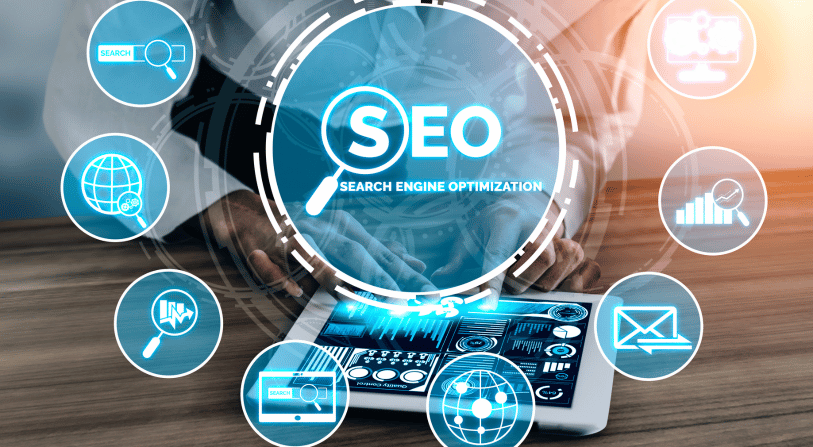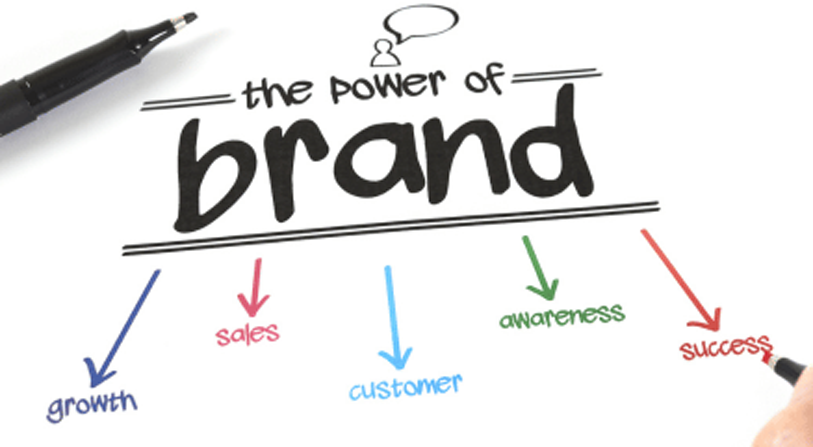Enhancing Business Communications: Unleashing the Power of Email Design and Redesign Alexis Prisendorf Have you ever stared at a cluttered, badly designed email and immediately hit the ‘delete’ button? We’ve all been there. But what if the emails from your business elicit the same response? That would certainly not be good news. With technology’s ever-expanding boundaries, it’s critical to get creative in our communications strategy and that includes crafting smart and effective emails. I’ve always maintained that a business email is like a handshake. It makes a strong statement about who you are and what your company stands for. That’s why designing your email, and redesigning when needed, is an essential aspect of business communication that you should never ignore. Here are five strategic tips on enhancing business communications through effective email design and redesign. 1. Define the purpose: It’s important to understand that every email sent serves a unique purpose. Is it for promotion, information dissemination, or purely for networking? When the objective of the email is clear in your mind, it becomes much easier to craft the layout and message accordingly. An unclear, aimless email may end up confusing the reader or even worse, getting lost in the labyrinth of unread messages. 2. Simplicity and clarity: Have you heard the phrase ‘less is more’? It rings particularly true in the realm of email communication. Maintain a simple layout, avoid information overload, and most importantly, get your message across clearly. Simple, focused emails often generate higher engagement levels because recipients don’t have to decode complicated content. 3. Responsive design: Did you know that 81% of emails are read on mobile devices? With mobile usage rapidly overtaking desktop browsing, it’s crucial to use a responsive design for your emails. They should render perfectly irrespective of the device it is being viewed on, thereby offering a seamless experience to the reader. 4. Consistency in branding: Consistency fosters familiarity and builds brand credibility. Make sure your business emails carry consistent brand elements like color schemes, fonts, logos, and even tone of the message. A brand-consistent email layout not only looks professional but also contributes significantly to brand recall. 5. Redesign as required: Redesigning is not a once in a blue moon exercise. The design preferences of your audience can change rapidly and staying ahead of the curve is key to capturing their attention. Moreover, if you see a consistent dip in your email engagement, that’s a sign to reassess your email design and innovate. Whether it’s about gaining new customers, or nurturing existing ones, effective communication is always the cornerstone of successful business relationships. And enhancing your email design can be a strategic lever to accomplish just that. So take a deep breath, revisit your business emails and see if there is room for redesign. A small design tweak could lead to a significant increase in your reader engagement and eventually your bottom line. To end, it’s wise to remember that Rome was not built in a day, and neither can a powerful email strategy be crafted overnight. But starting with these practical tips and experimenting along the way can definitely lead you on the right track. Remember, communication is a vital lifeline for your business, and your email design and redesign can help to make this connection more effective, persuasive and successful. Ready to power up your business emails? Need more detailed guidance on creating a smart email design strategy for your business? You’re in luck! Contact me to gain access to in-depth knowledge, tricks and tips for using emails effectively to improve your business communication. Let’s unlock the full potential of emails together! Happy Emailing!
Setting Standards: Importance of Brand Guidelines for Business Consistency
Setting Standards: Importance of Brand Guidelines for Business Consistency Alexis Prisendorf In the cutthroat world of business today, carving a distinct niche and building an invincible reputation can seem a herculean task. In this ocean of information overload and identical-looking brands, the question is – how do you set yourself apart? The answer is quite simple: brand consistency. To achieve this consistency, every organization, whether small or large, needs brand guidelines. The goal of my post today is to give you an insight into why it is so essential for businesses and five easy tips to make it happen. In essence, brand guidelines act as a rulebook or blueprint that outlines how a brand should be presented to the world. These guidelines form the foundation of any successful branding strategy. Without brand guidelines, your company risks losing its identity, becoming just another player in a crowded marketplace, struggling for differentiation. It provides your brand a unified voice, image, and overall ethos across all channels. Brand guidelines do not only talk about what your logo should look like but provide an entire narrative, a holistic image of what your company stands for. Now let’s delve deeper into five tips on how to develop these essential guidelines effectively: 1. Define Your Brand Personality: Understanding and defining your brand’s personality forms the heart of any brand guideline. This will be the lens through which you view every decision – is it aligned with the brand’s personality? 2. Consistent Visual Identity: Make sure you develop a strong visual identity. This encompasses everything from logo use and typography to colors, photography styles, and even design layouts. 3. Standardize Your Brand Voice: Your brand’s voice includes how you communicate with your customers and the kind of language you use in marketing materials. It should align with your brand personality, reinforcing your image at every touchpoint. 4. Create a Logo Guideline: Every brand needs a distinct, identifiable logo. The brand guidelines should contain instructions for its size, placement, color, and alternate versions, providing an overall blueprint for consistent use. 5. Adaptability: A successful brand evolves with the business landscape, and so should your brand guidelines. It should be a living, breathing document that can adapt to changing scenarios. Without these guidelines, you are likely to encounter inconsistencies, and every mistake costs you in terms of lost recognition, confusion among your customer base, and damage to your professional image. By outlining and adhering to clear, thorough brand guidelines, you provide your business with the means to create a consistent brand experience, enhancing credibility, building trust, and fostering loyalty with your customer base. For those unfamiliar with this process, establishing brand guidelines can seem a daunting task. But it’s a critical component for brand recognition and consistency that shouldn’t be overlooked. The time and effort invested in establishing clear and concise brand guidelines can create exponential returns down the line by allowing your brand to stand out from the crowd, creating a recognizable image in your customer’s mind, which ultimately influences their buying decisions. Remember, in the business world, brand consistency isn’t just a nice-to-have. It’s a need-to-have. By taking these steps towards defining and maintaining your brand guidelines, you lay the groundwork for business success, and create a legacy that stands the test of time. Want to take the next step and establish effective brand guidelines for your business? Let’s chat! Email me at setstandards@[LINK] to start a conversation about the unique potential of your brand. Every brand has a story, and it’s time for your brand to tell its story – consistently and compellingly. I look forward to hearing from you soon and working together to make your brand stand out.
Boosting Visibility: Strategies for Effective SEO Optimization in E-Commerce
Boosting Visibility: Strategies for Effective SEO Optimization in E-Commerce Alexis Prisendorf Over the years, I’ve noticed that one aspect that has become absolutely indispensable in this business is understanding SEO. I remember the good old days when opening an online store was quite straightforward – one just had to come up with an intriguing name, develop a beautiful website and start selling products online. Nowadays, there is a critical component that needs a considerable amount of attention – Search Engine Optimization (SEO). SEO helps e-commerce sites rank higher in search engine results, attract a broader audience, and increase conversion rates. Therefore, in this blog, I’ll provide some essential tips on boosting your visibility with effective SEO strategies for e-commerce. Please bear in mind that while I’ll be shedding some light on the subject, it’s just a snapshot and you may require further assistance to delve into the nitty-gritty of it all. Tip 1: Incorporate SEO into the product description Keyword integration within your product description is an important aspect of SEO optimization. But remember, never to stuff keywords – it not only spoils readability but Google penalizes websites that overuse keywords. Understand your target audience and their preferences and structure your content and descriptions around that. Tip 2: Use unique title tags and meta descriptions Title tags and meta descriptions have a significant impact on SEO. They influence how your website appears in the search engine results. For an effective strategy, make sure your title tags and meta descriptions are unique for every product and are descriptive of the product’s content. Tip 3: Prioritize Mobile Optimization In today’s fast-paced digital world, more than 60% of searches are done from mobile devices. If your e-commerce website is not mobile-friendly, you are missing out on a massive opportunity. Optimize your website to make it responsive for all types of mobile devices. Tip 4: Implement a comprehensive internal linking strategy Internal links help search engines understand the structure of your website, and it enhances the user experience by offering relevant information at their fingertips. Link related products or information to retain users on your website longer. Tip 5: Improve your website’s load speed One of the critical factors for ranking high on search engine results is your website’s load speed. If your e-commerce site takes too long to load, visitors will bounce, leading to a lower ranking on search engines. Several tools are available online, like Google’s PageSpeed Insights, to analyze your website speed and provide solutions to enhance it. Finally, the world of e-commerce is a battlefield where everyone wants to achieve a higher ranking in search results. However, you don’t have to be a genius to make your site rank higher. You just need to keep these tips in mind while structuring your e-commerce platform. That being said, these strategies can be your foundation for your e-commerce site’s SEO optimization. Always remember, like Rome, SEO can’t be built in a day; it needs time and dedication. Constant efforts and implementing various SEO strategies will pave the way to higher visibility in search engines. However, it’s essential to keep up-to-date with the ever-evolving trends and search engine algorithm updates. If this feels a bit overwhelming, don’t worry – you’re not alone. If you want a deeper insight into effective SEO strategies or are keen on discussing your e-commerce challenges, you can always email me at alexis@alexisprisendorf It will be my pleasure to offer advice and point you in the right direction. Ready to give your e-commerce business the SEO boost it needs? Remember, an investment in knowledge always pays the best interest. Keep exploring and implementing. Good luck
Navigating Rebranding: Understanding How It Shapes Your Business Growth
Navigating Rebranding: Understanding How It Shapes Your Business Growth Alexis Prisendorf Hello, there! I am very excited to dive into today’s topic and unpack the incredible impact that strategic brand building can have on your business’s success. In our fast-paced, technology-driven world, brands are so much more than just logos and taglines. Brands are experiences; they are relationships and values personified. They’re a strategic blend of art and science designed to connect on a deeply emotional level. We will delve deeper into understanding what goes behind the craft of brand building, its importance, and how it drives success for your business. To be successful today in business, you have to become a person of influence and develop a unique, authentic, and impactful brand. – Jayson DeMers BRANDING 101: Exploring the Art & Science Behind the Brand Building Process So what exactly is brand building? In the simplest terms, it is the process of creating a unique identity that sets your business apart from competitors. But it goes far beyond creating a logo or choosing a color scheme. Successful brand building is about developing a unique value proposition and delivering it consistently through every customer touchpoint. This could be your customer service, your social media engagement, or your products and services. Many businesses underestimate the importance of brand building, treating it as a cosmetic process rather than a strategic initiative. Yet, businesses that prioritize and invest in their brand development consistently enjoy more market share, customer loyalty, and bottom-line growth. IMPACT OF BRAND BUILDING ON YOUR BUSINESS Research shows that 59% of shoppers prefer to buy from brands that they trust and know. Building a powerful brand not only makes your business more recognizable but it also creates a strong connection with your audience, making them more likely to choose your business over a competitor’s. Creating a robust and powerful brand generates customer loyalty. The power of this cannot be overstated – loyal customers will not only stick around, but they will also actively promote your business to others So, how does brand building impact your bottom line? Here are some insights: Market differentiation: In a crowded marketplace, a strong brand stands out. It becomes the deciding factor for a customer choosing you over a competitor. Customer loyalty: Loyal customers will stick with you through market ups and downs, increasing your business resilience. Increased profits: Companies with strong brands can command premium prices because customers see value in associating with them. Better business relationships: A reputable brand can improve relationships with suppliers and investors. Talent acquisition: As your brand becomes popular and reputable, you will also attract quality employees who want to be part of your success story. THE NEXT STEP: Power up your brand Building a strong brand doesn’t happen overnight, and it’s not just about getting your logo designed by a graphic designer. It’s about strategic decisions that should involve everyone from your top executives to your frontline staff. I invite you to delve deeper into brand building strategies with us and unleash the power it holds to uplift your business success. Feel free to send us an email at inquiries@[LINK] to learn how you can start building a unique, memorable brand today. Remember, brand building is an investment, not an expense. When you commit to it, it delivers a return that keeps on giving throughout the life of your business. In the meantime, I encourage you to start pondering on how to empower your business by fortifying its brand. Your success starts with you! Reach out to us here and let me help you shape your brand to match your business’s future aspirations.
Exploring the Power of Brand Building and its Impact on Your Business Success
Exploring the Power of Brand Building and its Impact on Your Business Success Alexis Prisendorf As Confucius once stated, ‘The journey of a thousand miles begins with one step.’ Indeed, the task of rebranding your company might feel like that long journey. However, as your dedicated partner, we aim to help make that process as straightforward as possible. Navigating through a successful rebranding requires proper planning, consistent execution, and importantly, understanding the potential impact it has on your business growth. Understanding Rebranding and Its Impact Rebranding is not simply slapping on a fresh coat of paint. It involves a comprehensive analysis of your company’s core identity and making calculated alterations to better fit your desired image and appeal to your target audience. While daunting, rebranding often yields lucrative results. Research shows businesses that have successfully undertaken a rebrand reported an increase in customer engagement, sales and market presence. More than an aesthetic makeover, rebranding often catalyzes new growth and revitalizes businesses that have become stale in an ever-evolving market. However, getting to these impressive results is a journey. It involves rigorous market research, careful planning, strategic execution, and consistent communication. And yes, as Confucius subtly puts it, the first step could seem overwhelming, but remember, it is also the most significant. Start with The ‘Why Every great rebrand begins with a question – Why? Determining why you need a rebrand can pave the way for all the other essential steps. Whether it’s due to a significant change in business operations, to attract a new demographic or simply to revitalize an aging brand – each of these reasons forms a distinct path, resulting in a different branding outcome. Upon determining the ‘Why’, you must examine your company’s current image, consider customer perceptions, conduct market analysis, and decide the necessary changes. Your goal is not to be unrecognizable but to shape an identity that is the most advantageous and impactful to your market and future growth. Enlist Professional HelpTaking on rebranding without the right expertise could end up causing more harm than good. Enlisting the help of professionals like us is vital to executing a smooth and efficient rebrand. An experienced agency has the tools, skills, and experience to turn your rebranding objectives into a practical, comprehensive strategy, ensuring that your rebrand yields a significant ROI. Continued Communication is KeyConstant communication is integral during the rebranding process. Sharing updates with your customers, stakeholders, and team members is important for gaining their support and reducing potential confusion or backlash. Remember, change, while often good, can also generate discomfort. So, having a strong communication strategy will help mitigate the negative side effects of change. Closing Thoughts Rebranding is indeed a formidable endeavor. Yet, executed with a thorough understanding and meticulous planning, it can become the most rewarding journey you embark on with your business. It has the power to reinvigorate, revolutionize, and regenerate businesses, propelling them into new growth realms. As your strategic partner, we commit to navigating the turbulent waters of rebranding with you, employing our proven methodologies and expertise to ensure your business experiences growth and rejuvenation it truly deserves. Are you contemplating a rebrand? Take the first step. Reach out to us here. Let me help you shape your brand to match your business’s future aspirations.






